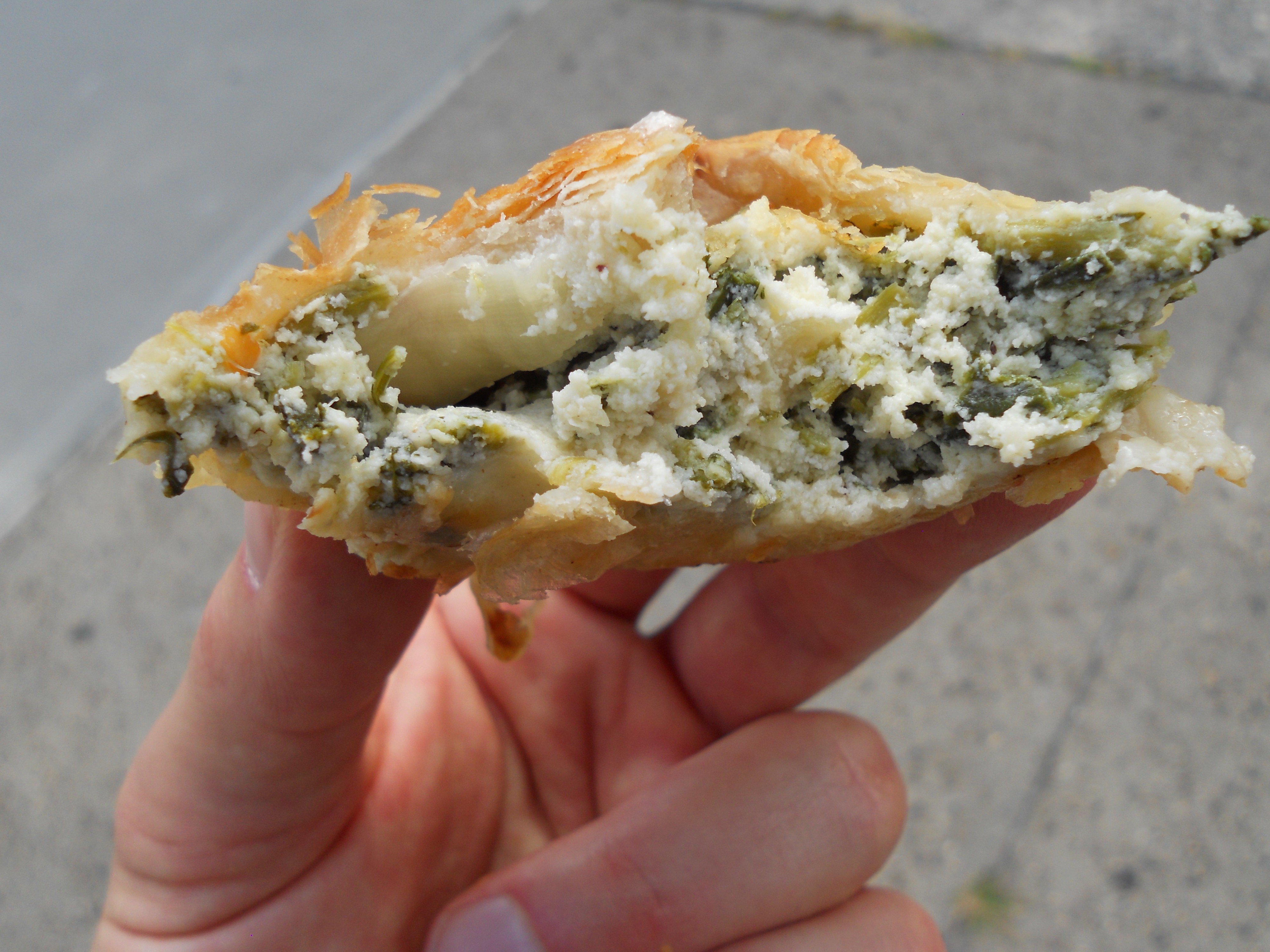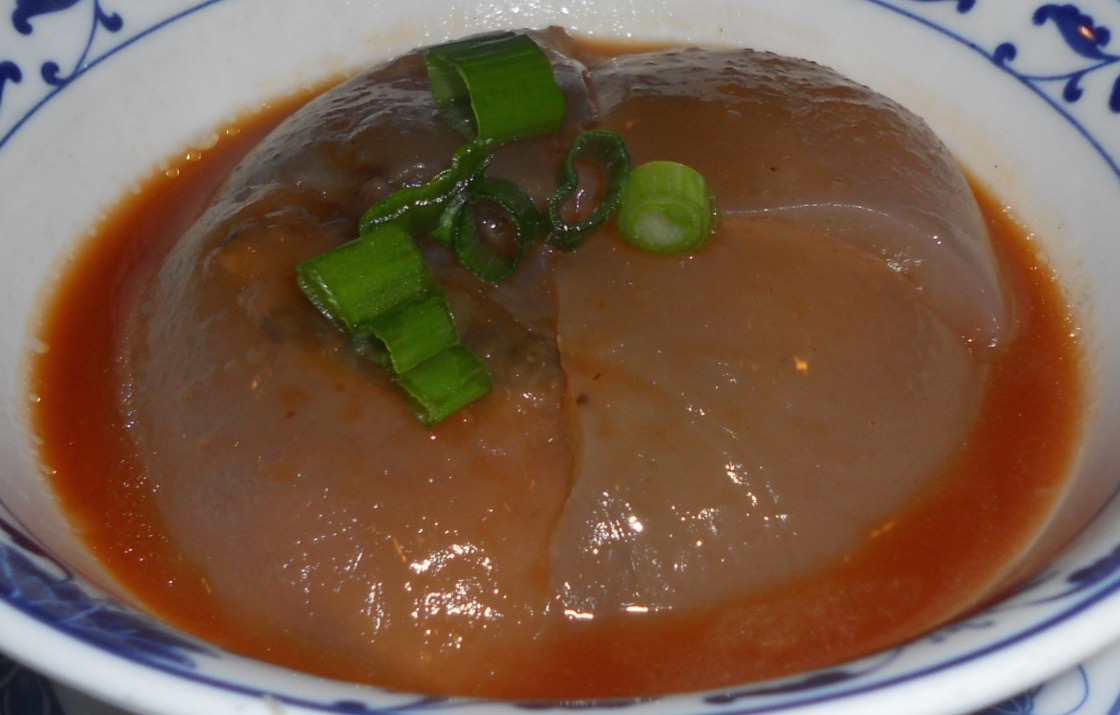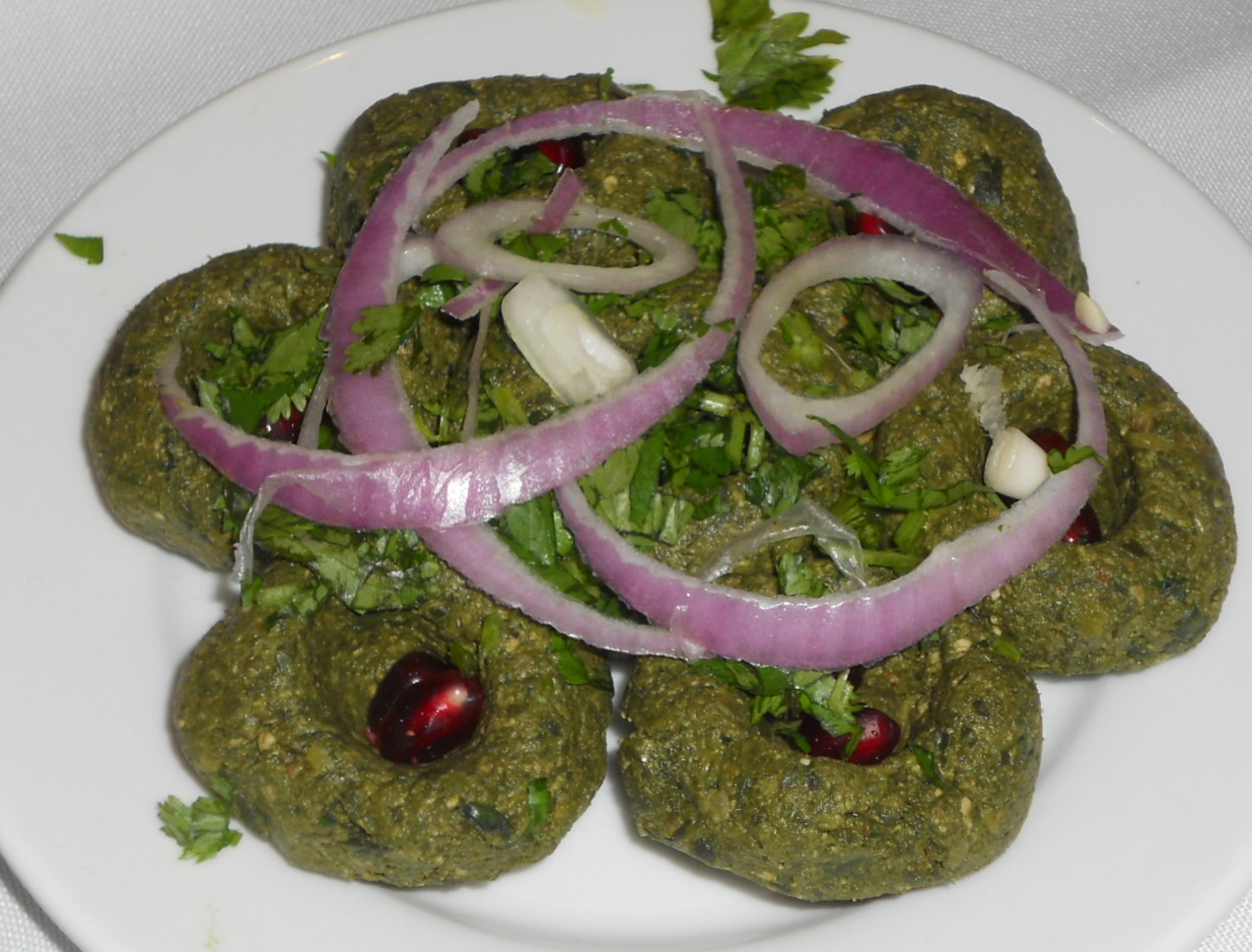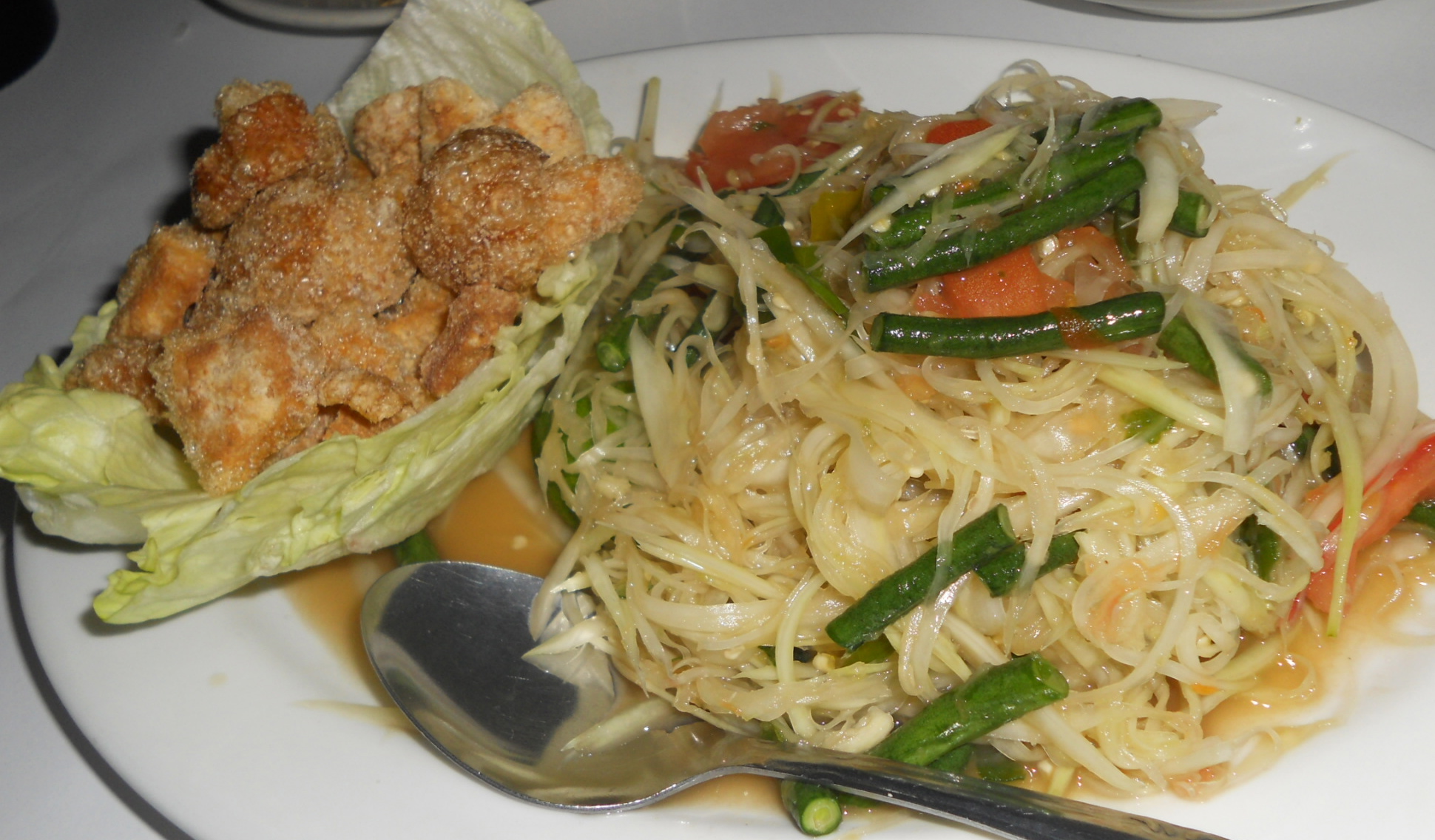|
|
According to potentially unreliable internet sources, there are 64 McDonald’s restaurants, 27 Subway restaurants, and at least 15 Starbucks outlets in Hawaii. I don’t mean to be cruel to America’s favorite chain restaurants–I am, after all, apparently enough of a McDonald’s expert to be cited as reference #58 on a Wikipedia article about McDonald’s. But there’s something particularly sad about the proliferation of crappy chain food in Hawaii, because Hawaiian food is effing amazing.
Why didn’t anybody tell me about Hawaiian food before we went to Hawaii? Almost every American I’ve ever met has been to Hawaii, and the only thing anybody ever mentioned was some bullpoop about Spam sushi. And my mom couldn’t stop talking about some delicious-looking fried doughnuts called malasadas, which are actually of Portuguese origin. But nobody ever told me about poke or lau lau or chicken long rice. WTF?
Apparently, tourists in Hawaii are too busy eating Big Macs to even notice that Hawaii has its own cuisine. It makes me sad that McDonald’s seems to massively outnumber Hawaiian restaurants, especially near touristy areas like Waikiki. Really, would you rather eat some fish prepared by a smiling Hawaiian, or would you prefer to eat a boxed meal served by this creepy dude?
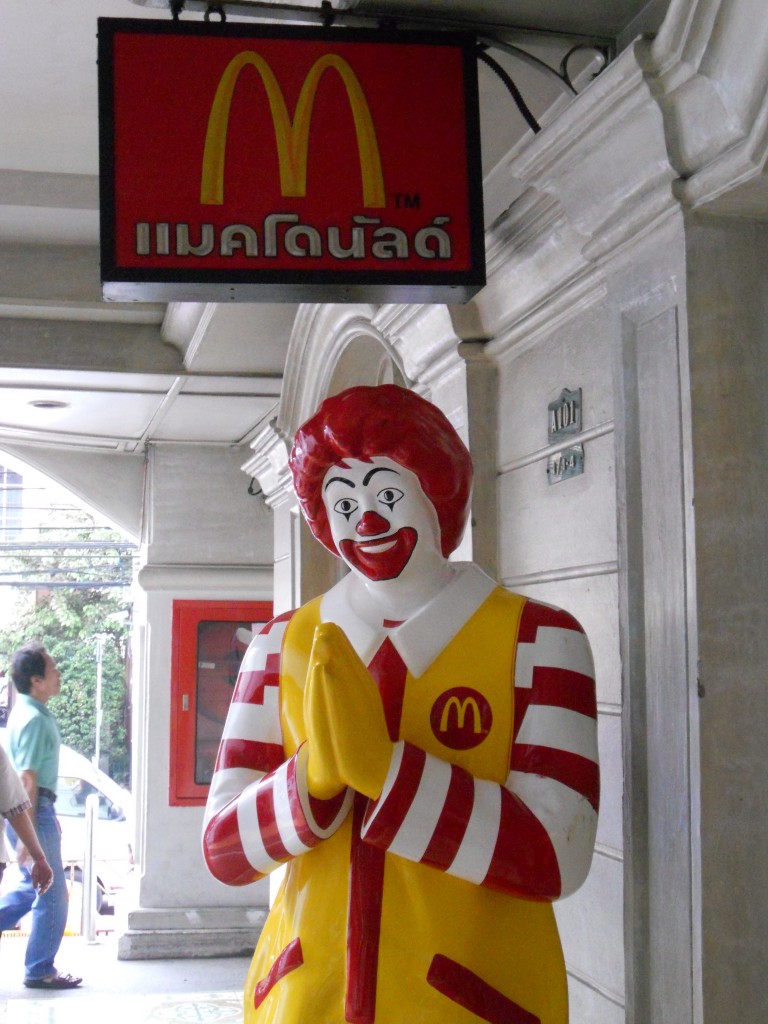 this is why I have scary dreams about clowns… I mean, the guy isn’t even offering any food, he’s just standing there, smiling and looking creepy, like he’s going wait until I turn my back, and then club me over the head with a brick of lard and eat my innards
Anyway, we managed to dodge the millions of Happy Meal-munching tourists at Waikiki, and we headed up to a small North Shore town called Hauula, where we rented an awesome little studio from a really nice Hawaiian family. They fed me a ripe papaya straight from the tree in their yard (“grown with aloha”), and that means that I’ll love them forever.
And if that wasn’t enough, our Hawaiian hosts kindly sent me across the street to a place called Papa Ole’s Kitchen, where I ate an amazing dish called pastele stew, made from shredded pork, olives, and Hawaiian chili peppers, and served with two large mounds of rice and some (tasty, but totally unnecessary) cole slaw. Really, the world needs more dishes made from pork, olives, and Hawaiian chili peppers:
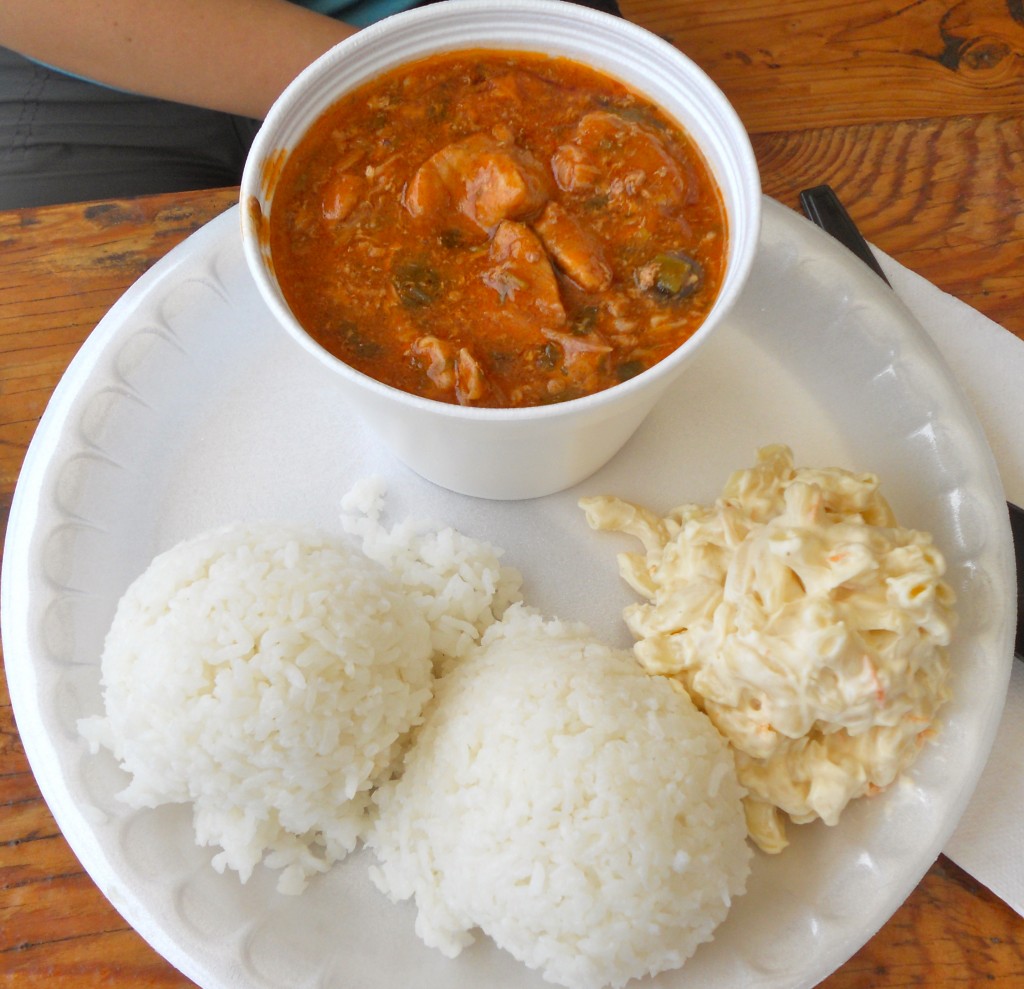 mmm… massive mounds
After Papa Ole’s whet our Hawaiian food appetites, we decided that we needed to try lau lau and poi, so we found a deli in Kaneohe called Masa & Joyce that serves a “Hawaiian plate.” For a mere $11.50, our new Hawaiian friends fed us lau lau (spiced shredded pork, cooked in some lily-like greens called ti leaves), chicken long rice, white rice, lomi lomi salmon, and a dessert called haupia. The lomi lomi salmon was basically a fishy version of pico de gallo, but the chicken long rice was an absolute revelation. It’s like the best chicken soup ever, but with cute clear noodles instead.
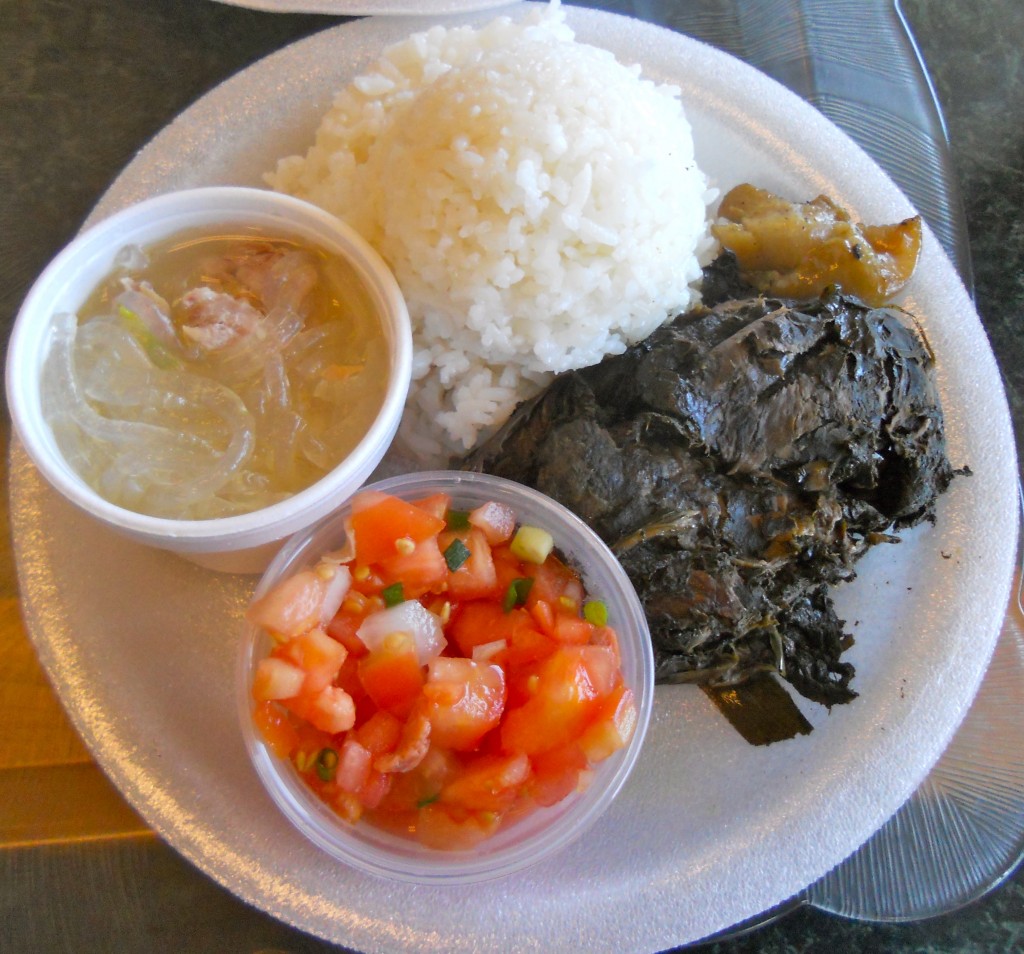
Our $11.50 meal also came with a dessert called haupia–it’s sort of like a chewy coconut jello cake, except that it’s actually really good. We also felt obligated to try poi, a Hawaiian staple made from mashed taro root. It wasn’t really my thing–it’s a glutinous, flavorless purple glob, served slightly chilled–but I can see how it might go well with lau lau if you’ve developed a taste for the stuff.
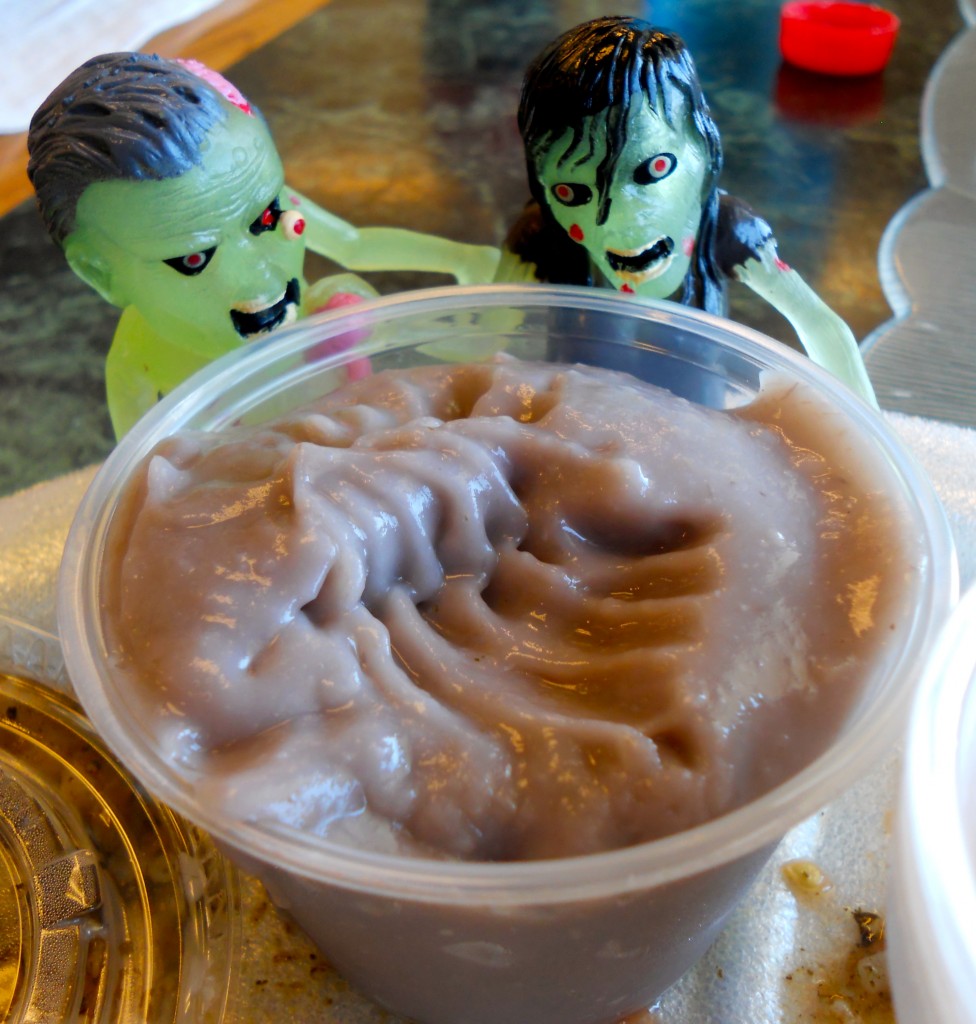 poi might also go well with brains
And then, we discovered the awesomeness of Hawaiian poke (pronounced “POKE-eh”). It’s basically Hawaii’s answer to ceviche, made from raw fish or squid or octopus or seaweed or even edamame, soaked in any of a number of soy-, chili-, garlic-, algae-, seaweed-, or citrus-based marinades.
Very few restaurants on Oahu’s North Shore serve the stuff, so we raided a Foodland grocery store for soy-garlic edamame poke, a wonderfully tender imitation crab poke with marinated onions, and some fantastic ahi limu poke, made from ahi tuna marinated in soy sauce, garlic, chili flakes, and a type of Hawaiian algae called limu.
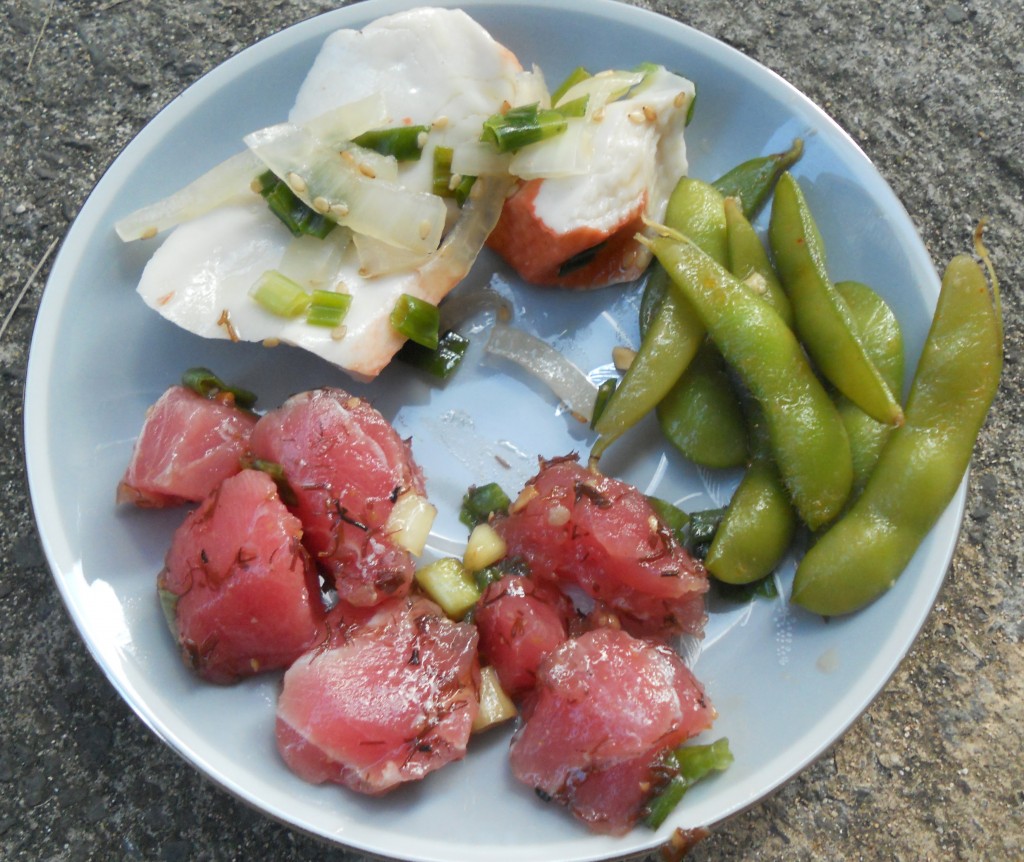
For our final breakfast in Hawaii, we returned to our friends at Papa Ole’s Kitchen, and tried the loco moco ($9.25): two big scoops of rice, a massive (easily ¾ of a pound) hamburger patty, and three fried eggs, all topped with a wonderfully salty beef gravy. I’m pretty sure that “loco moco” is Hawaiian for “holy shit you crazy little white dude, you’re going to eat this whole thing?!?”
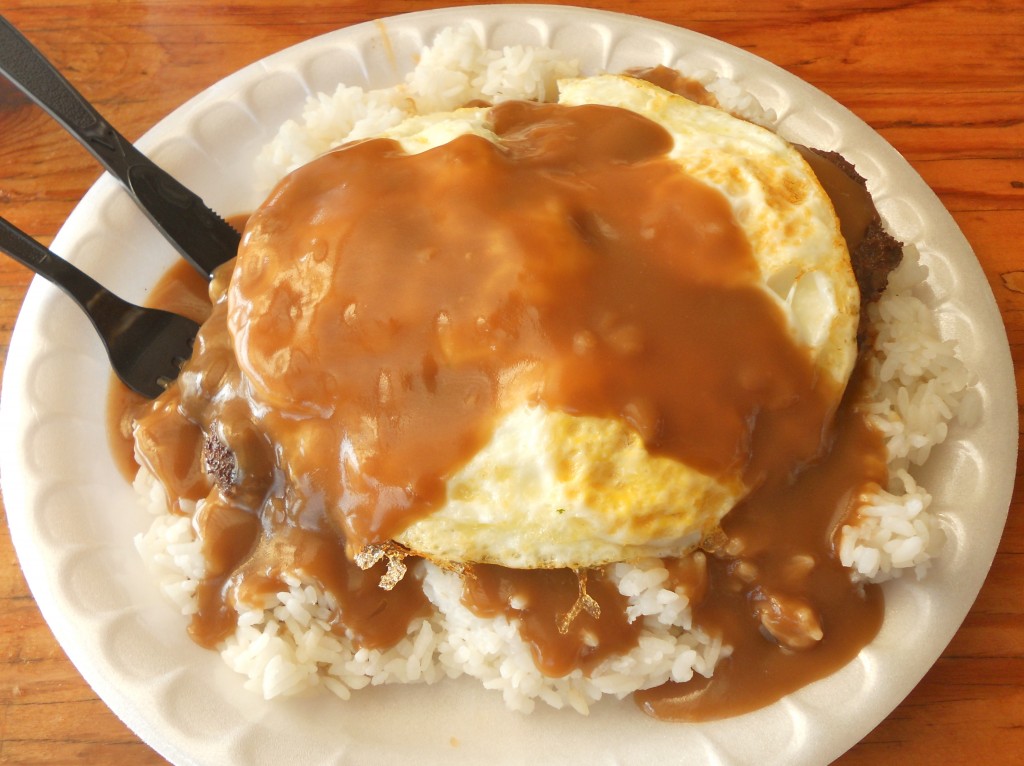 yes, the hamburger patty is large enough to stick out from under three fried eggs… and yes, of course the little white dude is going to eat the whole thing
I ate the whole thing, with the exception of a few stray bits of rice and burger. And that was just breakfast. My dreams of fitting into my bikini were completely ruined, but at least I was happy, and had avoided the ubiquitous Hawaiian Egg McMuffin during our trip.
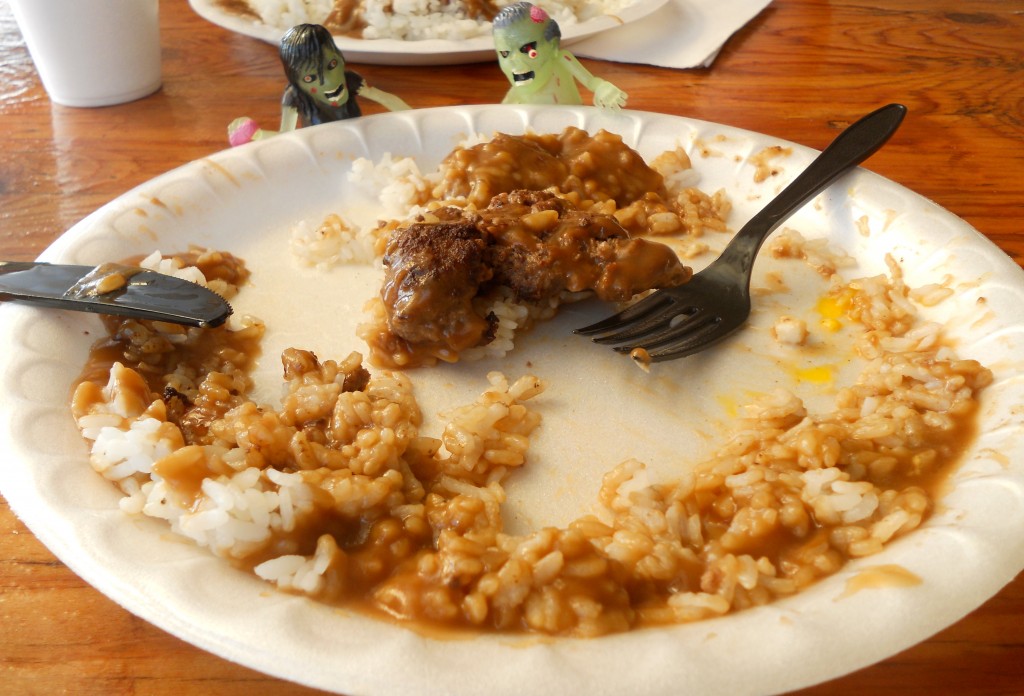 I win! (Bikini not shown.) 
Papa Ole’s Kitchen
54-316 Kamehameha Hwy
Hauula, HI (yes, tourists: you can take a bus there)

Masa & Joyce
45-582 Kamehameha Hwy
Kaneohe, HI 96744
|
|
|
Sometimes, I panic-eat.
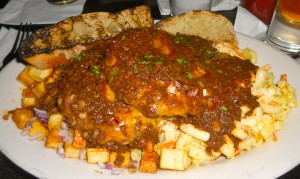 much tastier than the garbage I shoved into moving boxes Buried in a heap of hastily-crammed moving boxes and facing the end of my time in NYC, I could no longer tell whether I was surrounded by a pile of valuable personal effects, or a decomposing mountain of trash that had inexplicably cluttered my NYC apartment for three years. I started to feel claustrophobic surrounded by all of this garbage, and I thought that I might feel better if I ate something. Like a garbage plate.
So I sent panicky text messages to every sexy, slender person I knew in NYC. Especially the ones from Rochester, NY, home of the legendary Rochester garbage plate. And really, what’s more American than something called a garbage plate?
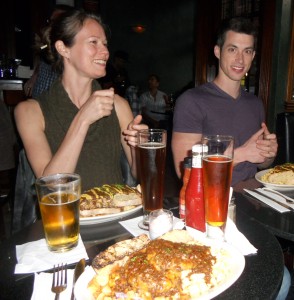 conclusive proof that beer and garbage plates make you thin and pretty The garbage plate, in case you’ve never tried one, is a truly American work of art. It consists of a base of macaroni salad and fried potatoes, topped with either two hot dogs or two cheeseburgers, and then the whole mess is slathered with diced onions, mustard, and a spicy beef sauce. So it’s, like, low in fat and calories, and is perfect for helping you build that statuesque six-pack that looks great on the beaches of Rochester.
The original garbage plate was created by Rochester’s own Nick Tahou Hots, which serves the stuff as a cheap way for Rochester partiers to fill their alcohol-soaked bellies. My Rochester pals tell me that a true garbage plate should cost less than $7, be incredibly greasy, and be served in a Styrofoam container.
The New York City garbage plate, served only at Daddy-O in the West Village, is a more refined affair, served on actual plates for $14. And it’s not even particularly greasy. That’s weird, and probably blasphemous.
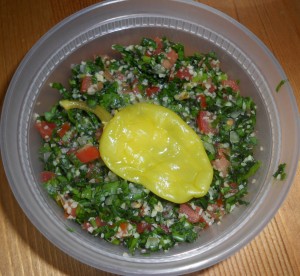 God bless overpriced tabouleh, too It was delicious, though. Who wouldn’t love a plate with two cheeseburgers, meaty hot sauce, fried potatoes, and macaroni salad? God bless America!
But I wasn’t done panic-eating. Moving is stressful. Food is not. More food means less stress, or at least a food coma severe enough that you can’t feel the stress anymore. So I zipped over to the East Village outlet of Moustache, a small chain best known for its “pitzas.” As far as I know, Moustache is NYC’s only remaining Iraqi-owned restaurant, now that Hells Kitchen’s short-lived La Kabbr restaurant is no longer with us.
(And yes, I realize that it’s, like, kind of ironic that I panic-ate American and Iraqi food in the same night. Call it panic-eating for international peace if you want.)
To my chagrin, nearly everything on Moustache’s menu was standard, familiar Middle Eastern fare—hummus and kabobs and schwarma, in addition to the pitzas. None of the dishes stood out as uniquely Iraqi, so I checked the Wikipedia entry on Iraqi cuisine; tabouleh salad was at the top of the page, so I ordered some. The serving was runty for $6, but it was phenomenally fresh, with finely-diced mint, parsley, tomatoes, cucumbers, and bulgur wheat.
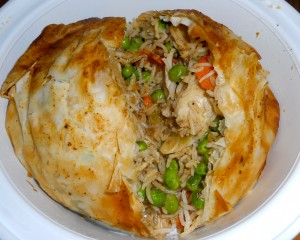 I feel healed already For my main course, I went for the ouzi, which was probably the least-familiar Levantine dish on Moustache’s menu. It was pretty damned tasty, with golden raisins, peas, white and dark meat chicken, onions, and carrots in a pocket of phyllo dough that was pulled straight from a giant oven. The ouzi was served with a light yogurt-cucumber sauce, not unlike a pleasantly runny, not-too-garlicky tadziki sauce.
I was impressed by the ouzi, though it was arguably overpriced ($15). But it’s all good. If nothing else, I felt far calmer after a bout of international panic-eating. And sometimes a good food coma is all you need to heal from the pain of cramming useless crap into moving boxes.
Yes, I moved. United Nations of Food (NYC) will be on hiatus until December, while I eat my way through Hawaii, Myanmar, Indonesia, Colorado, Laos, Australia, Thailand, California, and Hong Kong… but probably not in that order.

Daddy-O
44 Bedford Street, West Village
Subway: W. 4th St. (A, B, C, D, E, F, M trains) or Christopher St.-Sheridan Sq. (1 train)

Moustache Restaurant
265 East 10th Street, East Village
Subway: Astor Place (6 train)
|
|
|
Full disclosure: I f*cking love Brazil. I’ve spent a total of about four months there, and have fallen in love with Brazil—and in Brazil—over and over again.
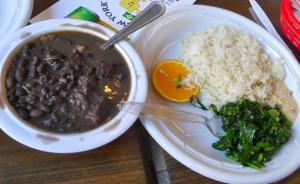 black beans and plasticware are sexy and tropical, no? So it’s really hard for me to be reasonable about Brazilian food. I’ve had some mind-blowingly great meals all over Brazil—especially in the northeastern corner of the country—and it’s hard not to envision sexy tropical food whenever I walk into a Brazilian restaurant… even though New York City restaurants aren’t at all tropical and sexy.
In an effort to compensate for NYC’s lack of tropical sexiness, I decided that it would be a good idea to eat Brazil’s national dish, feijoada—and anything else in our path—in three different Brazilian restaurants in a single afternoon. You know, to help us comprehend Brazil’s culinary diversity. Or maybe just to help us contract a spectacular disease known as bigfatfuckitis. You decide.
Either way, I might be totally mean to NYC Brazilian restaurants that can never be quite as sexy and tropical as the real thing. Consider yourself warned.
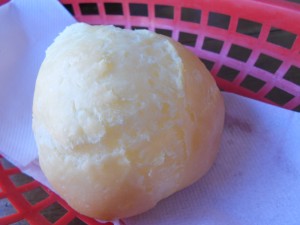 cheese bread is round, soft, milky, sexy, and tropical, no? We selected three Brazilian restaurants in Astoria that serve Brazil’s national dish, feijoada, which is a thick stew made from black beans and pork sausage, served with sides of rice, collard greens, and farofa (toasted cassava flour). Our first stop, Pao de Queijo (Portuguese for “cheese bread”), is a laid-back quick-service spot that serves Brazilian juices (including untranslatable treats like cupuacu, acai, and acerola) for $4, Brazilian sandwiches for as little as $3.50, and eponymous chunks of cheese bread for $1.75.
Like the restaurant itself, Pao de Queijo’s feijoada is pretty informal stuff, served in a plastic bowl, accompanied by rice and greens and farofa plopped on a plastic plate. You could argue with the presentation, but the feijoada was perfectly solid, with just enough spicy sausage to give the stew a nice bite. And it was pleasantly gentle on the wallet ($9), just like everything else at Pao de Queijo.
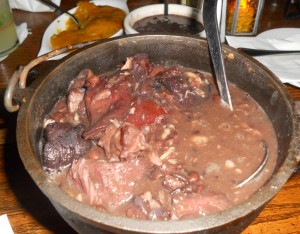 mmm… porky During our second stop, we moved way upscale to Favela Grill, a shiny restaurant in the opposite corner of Astoria. They have miniature clothespins on the napkins and very fancy-looking menus mounted on wooden boards. It’s all totally unnecessary, and I could hear my wallet wailing for mercy as soon as we walked in the door.
Unsurprisingly, the feijoada at Favela Grill cost more than twice as much as the stuff at Pao de Queijo. It was served in a fancy, miniaturized cast-iron pot, and the stew definitely had more meat and a more intensely porky flavor than the feijoada we ate earlier. But it cost $21. Was the miniature clothespin and extra porkiness really worth an extra $12? I mean, I love extra porkiness. A lot. But still: ouch.
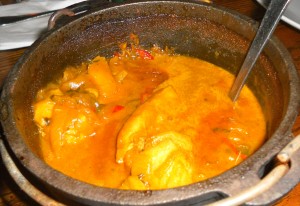 mmm… castrated moqueca We also tried Favela Grill’s version of moqueca, a seafood stew from the northeastern state of Bahia. Moqueca is made from coconut milk, fish (or, if you’re really lucky, shark), onions, garlic, cilantro, tomatoes, hot peppers, and dende oil—which is supposedly one of the world’s most difficult-to-digest (and delicious) oils.
If I’d never eaten moqueca before, I would have thought that Favela Grill’s version was reasonably impressive—basically, it was a semi-castrated Thai fish curry, but without the curry spices. Not bad. But compared to the moqueca that I ate in Bahia years ago, it was an abject and expensive failure. I still enjoyed it, but the price ($20) made me want to drink several caipirinhas in a row. So I did.
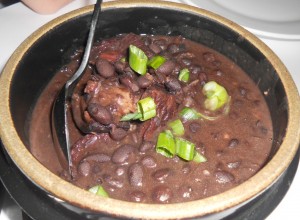 mmm… salty and porky I don’t know if the Brazilian food was getting tastier or if we were just getting drunker, but the feijoada at our third stop definitely tasted the best. We went to another unnecessarily classy Astorian-Brazilian place called Malagueta, named after a vicious little hot pepper grown in Brazil and Mozambique. Malagueta’s feijoada ($20) featured a particularly crumbly, flavorful sausage, and the resulting stew was blissfully salty and porky. And I like things that are salty and porky. Like my belly when I sweat.
But despite the tasty feijoada and incredibly attentive service, I still felt like something was missing. Besides the fact lots of money was suddenly missing from our wallets, some tropical spunk seemed to be missing from our food. We tried Malagueta’s rendition of acaraje (blackeyed pea fritters, traditionally fried in dende oil and slathered with spicy shrimp paste), which is normally fiery enough to burn a hole through tourists’ unsuspecting gullets and make white American boys cry like little girls. But at Malagueta, acaraje is a disturbingly refined, bland appetizer. I don’t get it.
I may never understand why somebody would make bland, castrated acaraje, but I definitely understand why somebody would eat craploads of feijoada and drink tons of caipirinhas. Astoria definitely isn’t as sexy and tropical as Brazil, but once we had enough black beans and Brazilian booze sloshing through our systems, we barely cared.
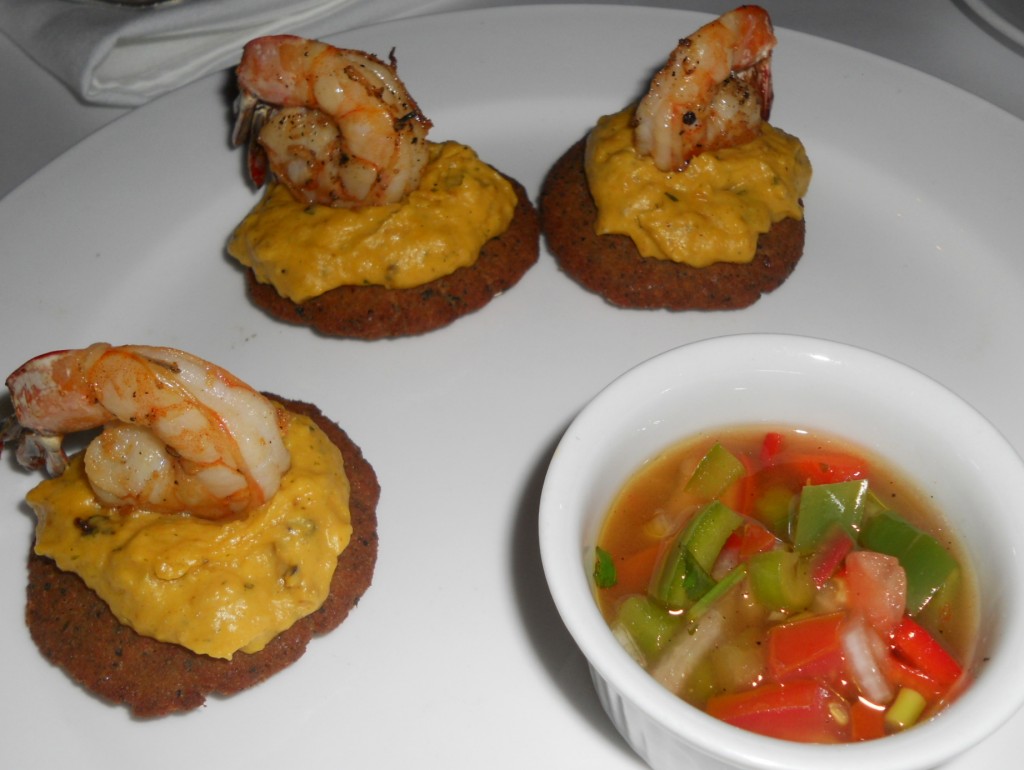 I’m not crying 
Pao de Quiejo
31-90 30th St., Astoria
Subway: Broadway (N, Q trains)

Favela Grill
3318 28th Ave., Astoria
Subway: 30th Ave. (N, Q trains)

Malagueta
2535 36th Ave., Astoria
Subway: 36th Ave. (N, Q trains)
|
|
|
I’m sure that my blog is peppered with assloads of unintentional international food comedy. One of my posts might rant and rave about how much I loved a meal from a particular country, while readers from that country are thinking “Dude, that slop looks nothing like our food, you stupid American slop-eating fool!” And the stupid slop-eating American food blogger will never know the difference.
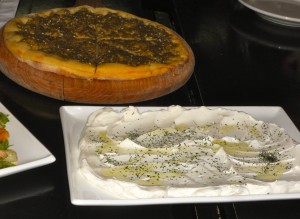 bounce-inducing zaatar bread and labneh So it’s always a treat when I can bring, say, a Syrian food expert along with me to a Syrian restaurant. It’s even more of a treat when the Syrian is literally bouncing with excitement because the food really is just like her mom’s.
Waterfalls Café on Atlantic Avenue in Brooklyn has served Syrian food for at least 15 years, but our Syrian friend—an energetic, brilliant law student named Lena who sometimes bounces when she gets excited—had never been there. In fact, she’d never been to a Syrian restaurant in the United States, despite living here for much of her life. And considering that her mom and her aunts sound like they can work some serious kitchen magic, why would she ever bother to set foot in a Syrian restaurant?
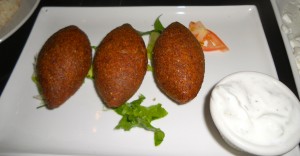 bounce-inducing kibbeh Even though there were only three of us at the table, we didn’t hold back when it came to ordering food. We started with a huge, round, freshly-baked slab of zaatar bread, coated with sesame seeds and sumac; I’m not a zaatar bread expert, but it was easily the best I’d ever eaten, and put Damascusland Bakery’s rendition to shame. The zaatar bread was particularly amazing when slathered with labneh, a phenomenally smooth spread made from homemade yogurt, mint, and olive oil.
As if we needed more appetizers, we ordered some fried kibbeh balls, arguably the national dish of Syria, made from bulgur wheat and ground beef. And then we did our best to make a dent in a large fatoosh salad, topped with parsley, tomatoes, cucumbers, garlic, and toasted pita.
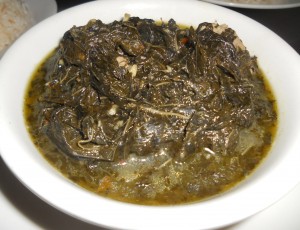 madly addictive (bounce bounce) And then we kept piling on main courses: a phenomenal bowl of okra stewed with tomatoes and served with a side of rice pilaf; zucchini stuffed with ground beef and topped with an energetic tomato sauce; and my personal favorite, a madly addictive dish called mulukhiyah, featuring chicken stewed with onion, garlic, lemon juice, cinnamon and sturdy, collard-like leaves. It was good enough to make all three of us bounce happily.
Even the beverages were fresh and interesting. We ordered two different versions of airan, a yogurt-based drink. One version was a salty smoothie made from garlic, parsley, and yogurt, akin to a salty, less-chunky, extra-garlicky version of Greek tsatziki sauce. The other was a mango-yogurt blend that resembled a south Asian mango lassi. Both were outstanding and inexpensive ($2.50), though one version was far kinder to our breath than the other.
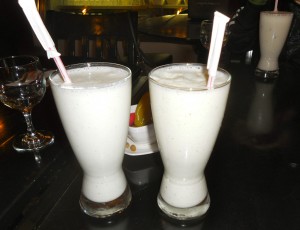 delicious, but really bad for our breath (bounce bounce) And just to clear up some Waterfalls-related confusion: the restaurant changed hands a few years ago, and the affable new owner hails from Egypt. The original Syrian chef is still working her magic in the kitchen, though, and the menu is thoroughly Syrian.
As soon as we met the Egyptian owner, Lena tossed out an adorable bit of warmhearted cultural stereotyping: “In the Levant, we’re known for our food. Egyptians are known throughout the region for being charming people.” I’ve only met about a dozen Egyptians in my life, but Lena might have a point: every one of them was warm and charming. Unless, of course, you’re a pigeon, in which case you might have a different opinion about Egyptians.
But no matter where you’re from—or how much you hate pigeons—it’s hard to argue with the spectacular, cheap chow at Waterfalls. Lena, for her part, was literally bouncing with excitement through much of the meal. I think it’s safe to say that the food really was that good, and its awesomeness wasn’t just a figment of my ignorant, slop-eating American imagination.
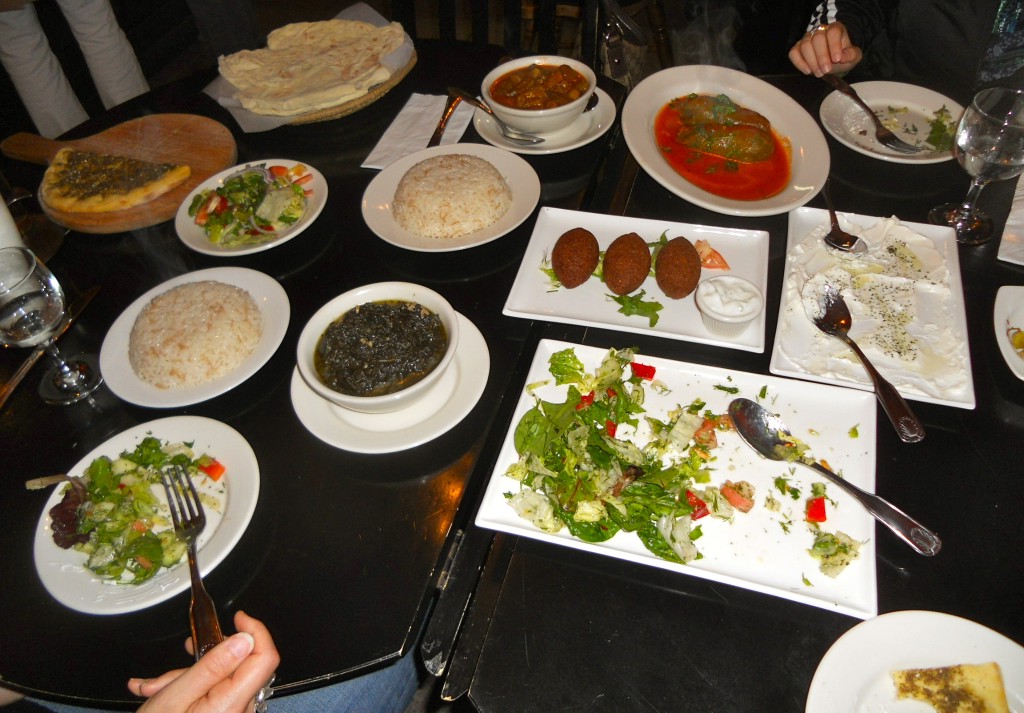 not slop

Waterfalls Café
144 Atlantic Avenue, Brooklyn
Subway: Borough Hall (2, 3, 4, 5 trains)
|
|
|
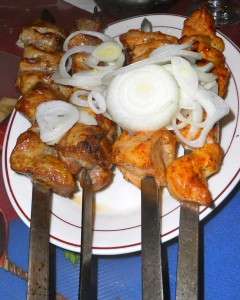 closeted Tajik kabobs with onion doilies? At a glance, one might assume that Salute Kosher Restaurant (sometimes listed online as “Salut 2000” or “Restaurant Salute”) is just another Uzbek-Bukharian place, much like Cherburechnaya or Tandoori or Aladdin. The word “Uzbek” appears twice on the menu, and the restaurant was featured in a 2006 New York Times article, which specifically mentioned that Salute serves “Uzbek plov.” So clearly, Salute is just another of New York’s many Uzbek-owned eateries, right?
But then I noticed an odd turn of phrase by the “Uzbek” restaurant owner interviewed for the article: “‘We had the most wonderful fresh lake fish in Dushanbe,’ Ledya Moses, an owner of Salute, said.”
Wait a second. Dushanbe? That’s in Tajikistan, not Uzbekistan. Hm.
So I rounded up a handful of friends—all of whom happen to be thin, intelligent people with impressive appetites—and we headed over to Salute to investigate. And to try to make my pals less thin.
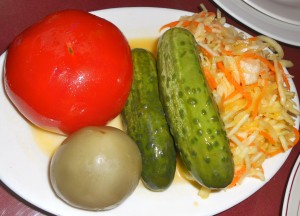 “Central Asian” pickled green tomatoes are effing amazing, wherever they’re from The menu at Salute features classic Bukharian fare, including hummus and babaganoush, plenty of pickled vegetables, plov (rice pilaf), and craploads of kabobs. Interestingly, only two nationalities were mentioned on the menu: several dishes were supposedly from Uzbekistan, and the pickled cabbage was “Armenian.” Crap, maybe these guys weren’t from Tajikistan after all.
When we ordered our first round of food, I asked the waitress where the owners were from. “This is Central Asian restaurant,” she responded, cryptically. After some good-natured coaxing, she finally relented: “The owners are from Tajikistan, from Dushanbe.” Congratulations, we found yet another restaurateur hiding in the NYC food closet! Maybe you could argue that Tajik food closely resembles Uzbek cuisine, but a small homage to Tajikistan on the menu would be nice, right?
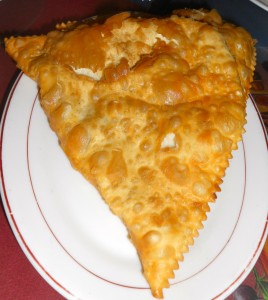 “Central Asian” cheburek Whatever. The food was phenomenal, even if humble Tajikistan wasn’t specifically honored on the menu. We had an inevitably excellent platter of pickled vegetables ($7), including pickled green tomatoes, which are rapidly becoming one of my favorite post-Soviet food obsessions. We had insanely fresh bread (lepeshka, $2), pulled straight from a tandoori oven, and plenty of charcoal-grilled lamb and chicken kabobs ($3.75). We even sampled Salute’s version of herring and potatoes ($6.50), some tasty fried chebureks ($1.75 each) stuffed with ground meat and onions, and some crunchy marinated eggplant (ochor, $6). Nearly everything we ate was beautifully executed and wonderfully fresh—definitely a notch or two better than, say, the mayonnaise-y goop at a certain Belorussian restaurant in Brooklyn, and at least as good as the Uzbek joint that serves horsemeat salad.
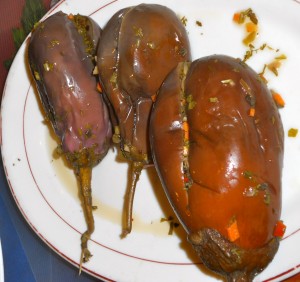 not quite as amazing as the babaganoush, but definitely crunchier and more photogenic A few dishes were particularly impressive, however. Babaganoush (eggplant paste with garlic, $5) is a standard dish served throughout a wide swath of territory from Greece to Central Asia, but Salute’s version had an addictive smoky flavor, and was probably the best I’d ever eaten. Another highlight was the “Armenian” pickled cabbage ($5.50), which was both ridiculously crisp and ridiculously spicy, even if it wasn’t ridiculously Tajik.
As you know, I’m always vaguely sad when I see a New York ethnic food closet-case, and I sometimes wish that places like Salute would fly their national flags more proudly. But when the food is this good, who really gives a crap if they hide in the food closet?
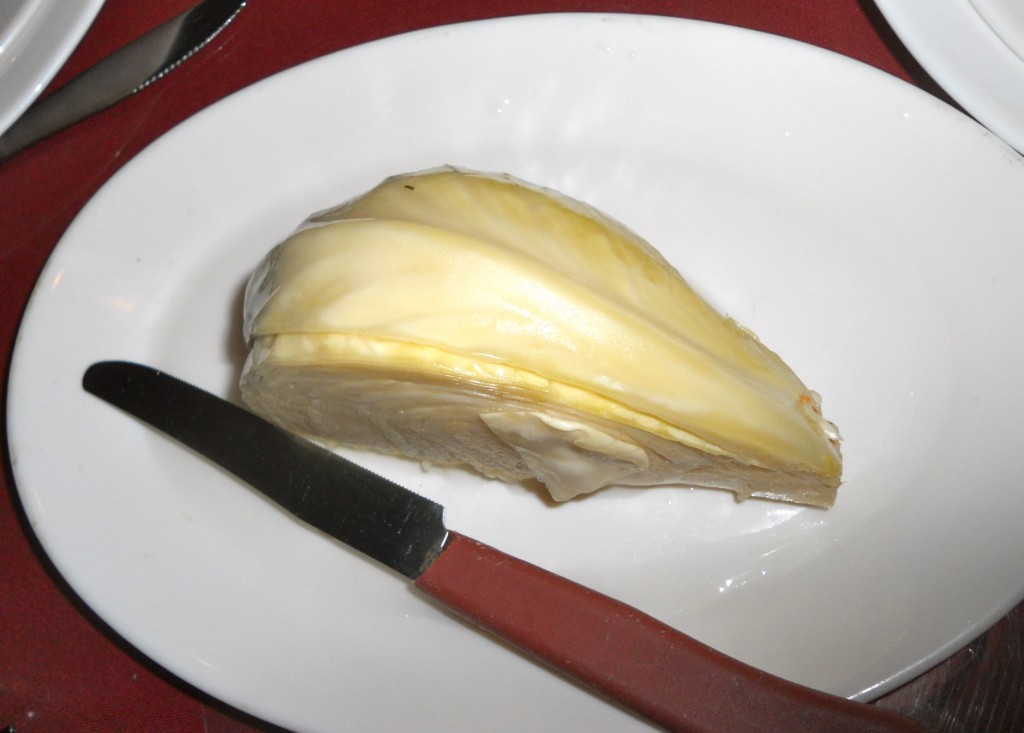 “Armenian” 
Salute Kosher Restaurant
6342 108th Street, Queens
Subway: 63 Dr.-Rego Park (M, R trains)
|
|
View My Favs!
Search This Blog
Food By Region
|












































